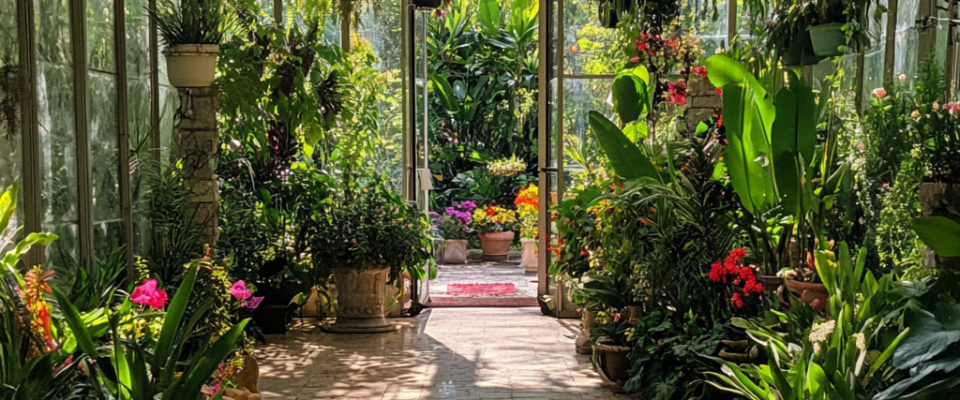The history and reasons for the exchange of plants between botanical gardens
The history of the exchange of plants between botanical gardens dates back to the era of Great Geographical Discoveries, when European travelers brought exotic plants from colonies and distant lands to their countries. Initially, botanical gardens were created as centers where plants from all over the world were collected and studied. With the development of science and techniques of their cultivation, the question arose of the need for a systematic exchange of plant material between institutions to enrich collections and preserve rare species.
The main reasons for the exchange of plants are scientific research, conservation of biodiversity, educational goals and increasing the genetic diversity of collections. For botanical gardens, the exchange of plants has become a way to expand their collections, maintaining their relevance and creating conditions for the study of new species in various climatic conditions.
International networks and cooperation agreements of botanical gardens
Modern botanical gardens actively participate in international networks and agreements, such as Botanic Gardens for Plant Conservation International (BGCI) and the Global Strategy for Plant Conservation (GSPC). These organizations play a key role in coordinating the exchange of plants and contribute to the creation of standards for such activities.
Thanks to the cooperation within these networks, botanical gardens can share not only plants, but also knowledge, experience and scientific data. International agreements facilitate exchange procedures and ensure that plants are used for purposes consistent with the principles of sustainable development and environmental protection. In addition, such networks help botanical gardens respond to global challenges related to species extinction, climate change and degradation of natural ecosystems. They provide a platform for discussing conservation and management strategies for plant resources.
The process of plant exchange: from preparation to transportation
The process of plant exchange between botanical gardens includes several stages, from the preparation of plants to their safe transportation and acclimatization to a new location. First, the specialists of the botanical gardens select the plants that will be sent to another garden. These plants must be healthy, free from diseases and pests, and suitable for the climatic conditions of the destination.
After selection, plants undergo a preparation process that may include root cleansing, pruning, and treatment with fungicides and insecticides to prevent the spread of pests and diseases. Special attention is paid to the packaging of plants so that they do not suffer during transportation and do not lose their vital qualities. The transportation of plants is carried out taking into account all phytosanitary norms and rules in order to minimize stress and damage to plants. Upon arrival at the botanical garden, the recipient is obliged to conduct a thorough inspection of the plants and ensure their adaptation to new conditions, which may take several months.
The role of plant exchange in biodiversity conservation
Plant exchange plays a crucial role in the conservation of biodiversity. Botanical gardens serve as a kind of “banks of living genes” where collections of rare and endangered species are maintained. The exchange between gardens makes it possible to expand the genetic base of these collections and create reserve populations of endangered species.
This approach helps to reduce the risk of species loss in the event of natural disasters, diseases or other factors that threaten their survival in the natural environment. Botanical gardens that exchange plants can participate in species restoration programs, returning them to their natural habitats or creating populations in new ecosystems suitable for them. Thus, plant exchange becomes an important element of a strategy to prevent the loss of biodiversity and preserve ecosystem services that ensure sustainable development.
Ethical and legal aspects of international plant exchange
The international exchange of plants is associated with a number of ethical and legal issues that should be taken into account by botanical gardens. First of all, this concerns compliance with the Convention on Biological Diversity (CBD) and the principles of equitable distribution of benefits from the use of genetic resources.
Botanical gardens are obliged to ensure that plants and genetic material are used exclusively for scientific, educational or conservation purposes, and do not violate the rights of the countries from which they were obtained. This is especially important when it comes to plants with potential commercial value, such as medicinal or ornamental species. It is also important to take into account phytosanitary norms and international standards established by the Plant Protection Convention in order to prevent the accidental spread of invasive species and pests that can damage the ecosystems of new regions.
The future of plant exchange in the context of global climate change
Climate change significantly affects the exchange of plants between botanical gardens, prompting a reevaluation of species selection based on their resilience to extreme weather conditions, droughts, and temperature fluctuations. As these climatic challenges intensify, the importance of plant exchange is expected to grow, enabling gardens to provide genetic material for developing new, more resilient plant varieties and supporting the creation of reserve populations for species most vulnerable to climate stress. Furthermore, advancements in transportation and storage technologies will enhance the efficiency of plant exchange, allowing botanical gardens to maintain more extensive and diverse collections. This approach will contribute to global biodiversity conservation and sustainable development.
Key points on climate change and plant exchange in botanical gardens
- Impact of climate change: Changing climatic conditions necessitate a reevaluation of species selection for plant exchange.
- Focus on resilience: Greater emphasis is placed on selecting plants that can withstand extreme weather, drought, and temperature variations.
- Role in adaptation: Plant exchange will be crucial for adapting to climate change by providing genetic material for developing resilient varieties.
- Support for vulnerable species: Botanical gardens can help create reserve populations for species most at risk from climatic stresses.
- Advancements in technology: Improved transport and storage technologies will facilitate effective plant exchange and enable the maintenance of diverse collections.
Questions and Answers
The exchange of plants began during the era of the Great Geographical Discoveries, when European travelers brought exotic plants from colonies and distant lands back to their home countries.
The primary reasons include scientific research, conservation of biodiversity, educational goals, and increasing the genetic diversity of collections.
Botanical gardens participate in international networks such as Botanic Gardens for Plant Conservation International (BGCI) and the Global Strategy for Plant Conservation (GSPC), which coordinate plant exchanges and establish standards.
The process includes selecting healthy plants, preparing them for transport (including root cleansing and pest treatment), packaging them carefully, transporting them according to phytosanitary norms, and acclimatizing them at their new location.
Climate change necessitates a reevaluation of species selection, emphasizing the need for resilience in plants to withstand extreme weather, drought, and temperature changes. Plant exchange will be essential for adapting to these challenges and supporting biodiversity conservation.

